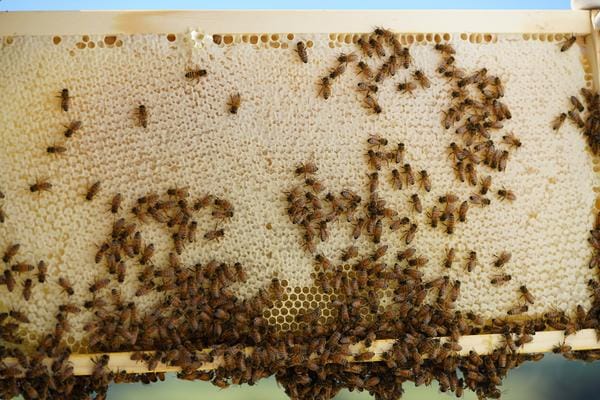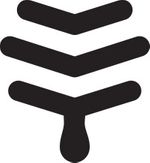Honeybees have evolved in climates with very cold winters, where flowers aren’t available year-round. In the warmer months, worker bees visit thousands of flowers a day to gather liquid nectar. They then reduce the water content and turn it into honey, a bee super-food with an incredibly long storage time.
Bees do this to ensure the whole colony has enough stores to last through the long cold winter months.
However, even though our bees gather and store their own food, there are many reasons why we may need to feed them.
So do you need to feed your bees?
Like so many questions in beekeeping, the answer is: it depends.
Many factors including location, season, climate, size and strength of the colony, how well they are established, and whether the bees have enough honey stores will impact whether they’ll need some extra support. You'll need to consider how much brood the queen is laying, the approaching seasonal weather and the availability of bee-friendly flowering plants.
The best information will be gained from experienced beekeepers in your local area.
Signs to look out for
On your next brood inspection, there are some signs to look out for to help determine if your bees are hungry.
Check for low levels of honey, or no honey in the brood nest, and bees tightly clustered with their heads down in the cells.
As a very general rule of thumb, a brood box full of bees would ideally contain at least one dedicated honey frame, full of capped honey.

The bees will usually keep this on the outside of the brood nest. There may be even more honey stored on the brood frames, but towards the top of the frame, in a rainbow shape above the brood.
A colony preparing to go into a cold winter will need a lot more honey stores. You may need to leave a super full of honey on their hives as food stores for the winter. Many beekeepers will use 2 brood boxes and/or opt for larger brood boxes to ensure the bees have enough stores for the winter.
If your colony does not have these stores, you may need to feed the colony.
Hungry bees eating up their honey stores is another sign that not much nectar is being brought in.
Look for honey capping with tiny pinholes where the bees have stuck their proboscis through. Sometimes this can be accompanied by bees clustered tightly on honey, with their heads down the cells.
It’s important to differentiate between this behaviour from nurse bees feeding larvae, or worker bees depositing nectar. Hungry bees are usually tight together and may have more edgy or slightly frantic energy.
As a new beekeeper, you might wish to try to educate yourself on the plants in your area that are flowering at different times of the year. This can help provide insight into the state of your colony’s honey stores as they move through the seasons, and help you make informed decisions on whether or not you might need to feed them. A journal with notes on which plants are flowering and when can be helpful as you move through the years keeping bees.
Some notes on feeding
The most common way to feed bees in a Flow Hive is to provide a sugar & water solution over the hole in the top of the inner cover. This can be easily done with a large jar or ziplock bag full of this sugar syrup, with some tiny holes to allow the syrup to slowly drip out.
See Cedar’s great video on how to make a simple bee feeder:
It’s important to use simple refined white sugar only, as brown or raw sugar can contain impurities that may give the bees dysentery.
Beekeepers usually mix either a thin or a thick syrup solution depending on their goal, and this can be measured out using either weight or volume.
1 part sugar to 1 part water = a thin syrup.
2 parts sugar to 1 part water = a thick syrup.
The rationale behind these two sugar syrup ratios is that thin syrup is similar to nectar.
The availability of nectar stimulates brood production, and feeding the bees thin syrup tends to do the same thing. With a good supply of nectar or light syrup, workers will build comb and the queen will lay eggs. Thin syrup is usually used as a way to supplement during short spells of nectar unavailability, to help a weak hive, or to establish a new small colony.
Thick syrup resembles honey, and bees will tend to store it for winter. It is usually used as a way to increase the colony stores before winter, sometimes called “putting on weight”.
You can stop feeding when the hive has enough stores and nectar is coming in, when the bees lose interest in the syrup, or when you add a honey super.
When the weather gets cold enough, bees will stop taking the syrup. The remaining syrup should be removed to prevent it from fermenting and to prevent moisture building up in the hive.
For more on feeding bees, check out this video from our livestream Q&A:




